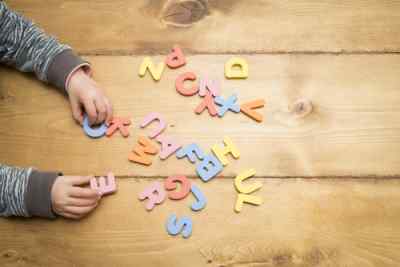
Communication is vital to a child’s wellbeing and development, but children with cerebral palsy may struggle to develop their language skills as easily as other children. About 60% of children with cerebral palsy have some type of speech or language impairment. It is important to support the development of communication skills in children with cerebral palsy for their cognitive and emotional development. If left without the ability to communicate, children can struggle with depression, isolation, and other related issues.
Children who have been diagnosed with cerebral palsy stand a significant risk of delayed speech development or other communication difficulties. Often, these difficulties include problems generating speech, gestures, facial expression, understanding spoken language, and using their voice. Cerebral palsy causes issues with muscle control, including causing spasms, weakness, limited range of motion, and slow movement. Children with cerebral palsy may have a difficult time controlling their fine motor skills and producing speech.
Disruptions in communication development can be caused by:
- Speech-motor control difficulties
- Cognitive deficits
- Language acquisition issues
- Sensation perception impairments
Types of Speech and Language Impairments
As mentioned, speech and language impairments are common challenges for individuals with cerebral palsy. Speech abilities of children with cerebral palsy can fall into one of these four categories:
- Typical speech output
- Impaired speech, typical language
- Impaired speech, atypical language
- No speech abilities
In addition, there are specific speech disorders associated with cerebral palsy, including:
- Articulation Disorders: Difficulty in producing speech sounds accurately due to muscle control issues inherent in cerebral palsy
- Fluency Disorders: Challenges in the smooth flow of speech, such as stuttering or cluttering, caused by muscle spasticity or weakness
- Voice Disorders: Abnormalities in pitch, volume, or quality of voice resulting from underlying motor control issues associated with cerebral palsy
Understanding these impairments is crucial for tailoring strategies to address the communication needs of those with cerebral palsy.
Impacts on Social and Emotional Development
Enhancing communication skills is essential for the social and emotional development of children with cerebral palsy. Effective communication allows children to express their needs, share their thoughts, and connect with others, which is foundational for building relationships.
Improved communication skills also foster a sense of belonging and reduce the risk of depression, isolation, and related emotional issues in individuals with cerebral palsy.
Speech therapy, assistive communication devices, and tailored educational programs can play a pivotal role in developing these skills.
Importance of Early Intervention
It is unlikely the children outgrow their difficulties as they age, but early intervention is often beneficial to aiding language development. Most language issues can be caught as early as when the child is 2 years old, so it is important for parents of children with cerebral palsy to have a comprehensive speech and language assessment by that age. A speech pathologist can help parents come up with a plan to build their child’s language skills, including speech therapy and augmentative and alternative communication (AAC) methods.
Language development interventions for children with cerebral palsy can help them improve their communication skills, including expressive and receptive communication using AAC methods such as sign language or speech generating devices. Speech therapy can help children learn to express themselves, build vocabulary, and refine motor control skills. AAC methods can provide severely impaired children with other methods to communicate and express themselves.
Early intervention is important for the emotional, social, and language development of children diagnosed with cerebral palsy. Speech therapy and other methods of communication will allow for communication between children and their parents, allowing for a closer bond, as well as building a foundation for them to participate successfully in school.
Legal Support Is Critical
Establishing a link between medical negligence and cerebral palsy development is crucial for securing compensation to cover ongoing medical and therapeutic expenses. Legal action enables families to:
- Hold negligent medical providers accountable for the harm inflicted
- Seek financial compensation to alleviate the financial burden associated with cerebral palsy-related care
Pursuing legal action empowers families to access essential resources for their loved ones with cerebral palsy, giving them access to services such as speech therapy, assistive communication devices, and tailored educational programs.
Like many birth injuries, cerebral palsy may be preventable. If your child was diagnosed with cerebral palsy after a birth injury, you may be able to claim compensation. The actions of negligent medical personnel can have life-changing consequences for your family, and you deserve help paying for your child’s medical expenses.
At Beam Legal Team, we understand the difficulties facing your family.
We are dedicated to being a voice for those affected by birth injuries. Contact our team of Chicago birth injury attorneys today for a free consultation regarding your case.
Originally published August 3, 2017.
